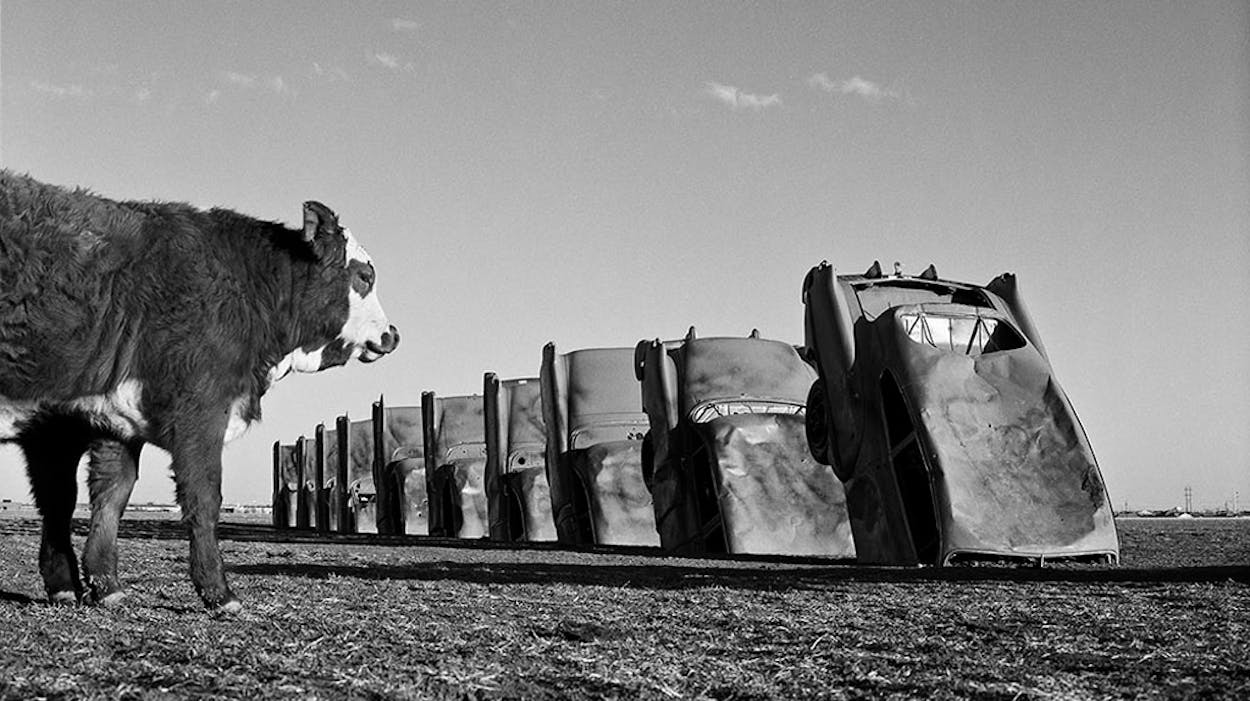In 1974, three artists from San Francisco found themselves in Potter County, Texas, burying ten Cadillacs nose first into a Texas wheat field alongside Interstate 40, an art installation that would eventually come to be known as Cadillac Ranch. This is an eventful week for the Cadillac Ranch, one of the most celebrated roadside landmarks in the country: on Saturday, the site celebrates its fortieth anniversary, and on Tuesday, Stanley Marsh 3, the art installation’s eccentric millionaire benefactor, died. Marsh’s legacy was tainted in his final years after a string of teenage boys alleged he had sexually abused them. (Read Skip Hollandsworth’s obituary of Marsh here.) In the wake of those revelations, Amarilloans weren’t sure what to think of the Cadillac Ranch anymore (one even suggested bulldozing it), but this unease largely lifted after a settlement to a lawsuit revealed that Marsh no longer owned the property. And so “the hood ornament of Route 66,” lives on, constantly changing as passing graffiti artists leave their stamp on it.
Amarillo native and longtime Texas Monthly photographer Wyatt McSpadden, who went to work for Marsh when he was nineteen years old, has been documenting the evolution of the art installation since before the first car went into the ground. “The Cadillacs were buried when I was 22 and just getting started as a photographer. Those pictures still have a life,” he said. In 1978, Texas Monthly’s associate art director Nancy McMillen called up McSpadden and gave him his first assignment for the magazine: to photograph Marsh, whom he dubs “Amarillo’s Mad Hatter.” “All of this has been a huge thread in my life. I hate that he went out with such an awful stain but I have the option to remember the good things, and that’s what I’m doing.” McSpadden’s photos and captions of the Cadillac Ranch over the years follow below.

One of the few images that remain of Cadillac Ranch in its original condition, taken in 1976. Once the graffiti mobs got started there was no stopping them.

The last car purchased was the first car buried. Here Doug Michels of Ant Farm, the group of California artists that created the project, seals the deal on the 1949 model in an alley in northeast Amarillo.
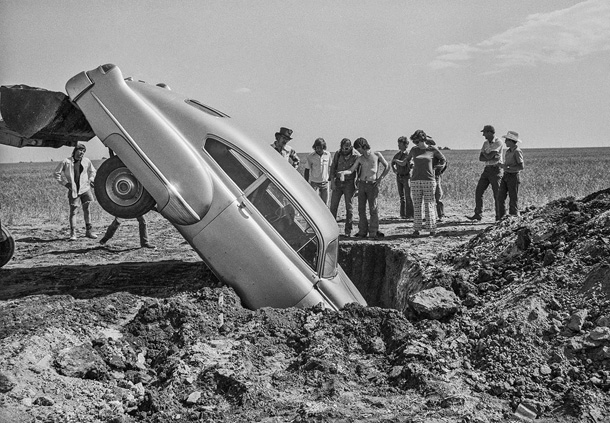
The Cadillacs were buried in sequence from the oldest, 1949, to the newest, 1964. There are 10, each car representing the latest version of the famous Cadillac tail fin.
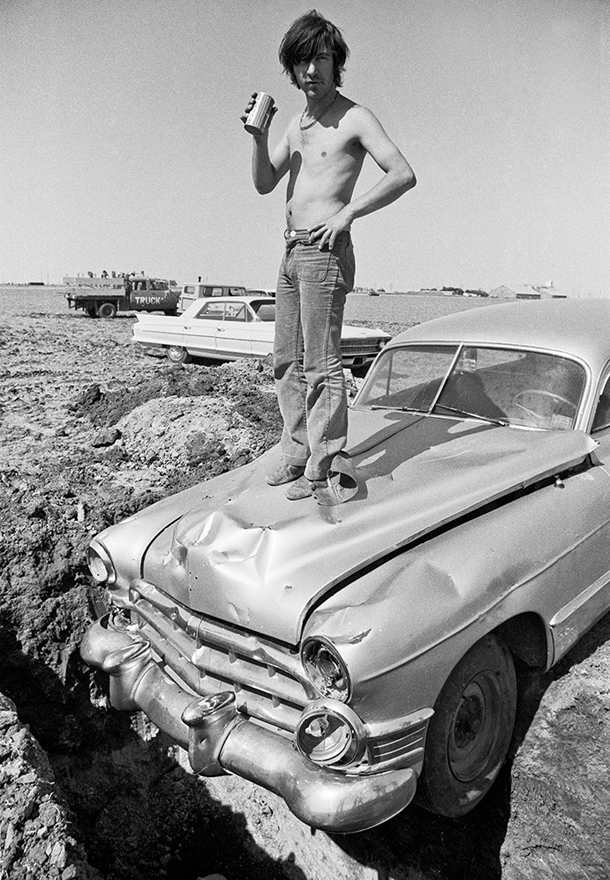
Members of Ant Farm moved to Amarillo for several months to plan, survey the property, purchase and bury the cars. This fellow is a neon artist from England, Roger Dainton, who happened to be in Amarillo on an assignment and became an honorary member of Ant Farm by helping to bury the cars.
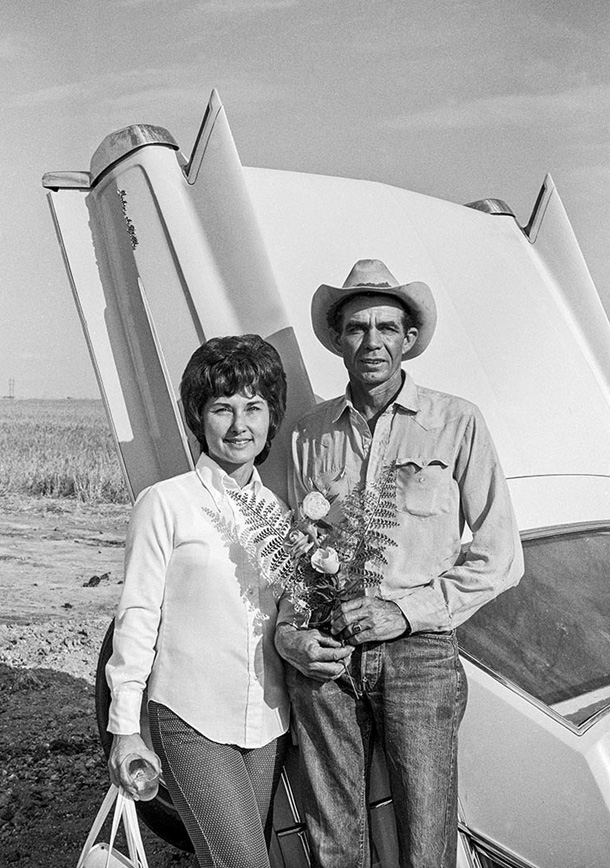
There was giant party to mark the completion of the Cadillac Ranch in late June. Everyone was invited from the bluebloods of Amarillo, the hippies, and here a ranch foremen from a nearby cattle operation and his wife.
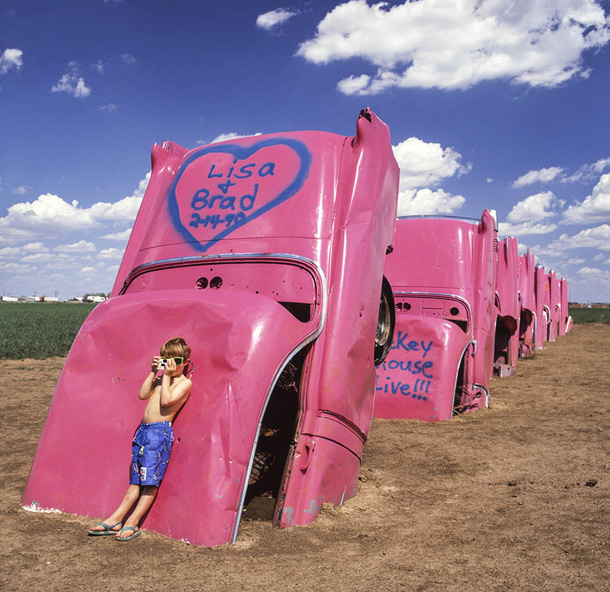
Cadillac Ranch 1990. The caddies were painted several times in a variety of colors and shades of grey. The pink period was one of the most popular. No paint job stayed unmarked for long.
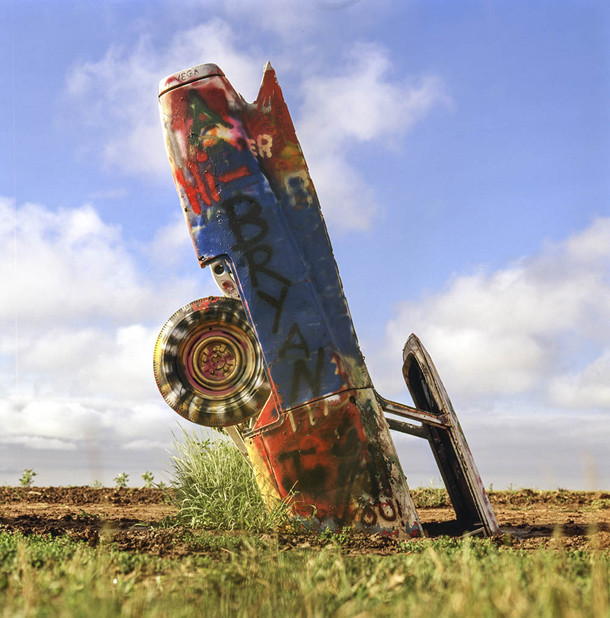
Another version of the chameleon Cadillac Ranch. Probably taken in the early nineties.
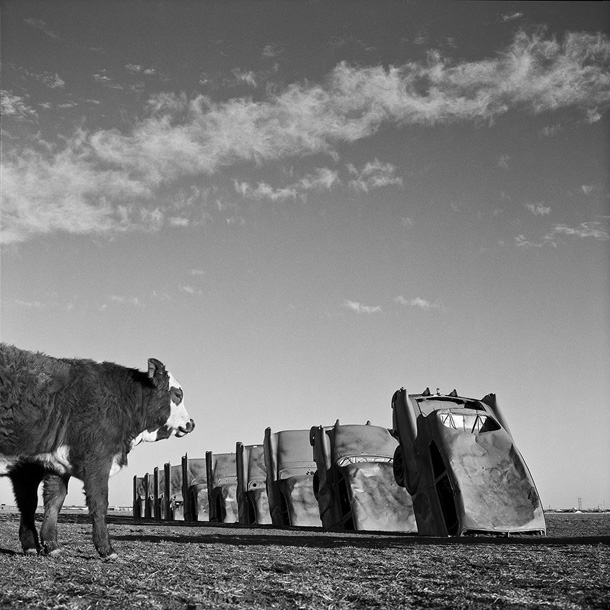
Cadillac Ranch has been located in active wheat pastures in both locations. In the winter and early spring the rancher would have steers out grazing. Cattle out to pasture can be squirrely but this steer was very patient in posing for me. Perhaps it was his third leg that made him so agreeable.
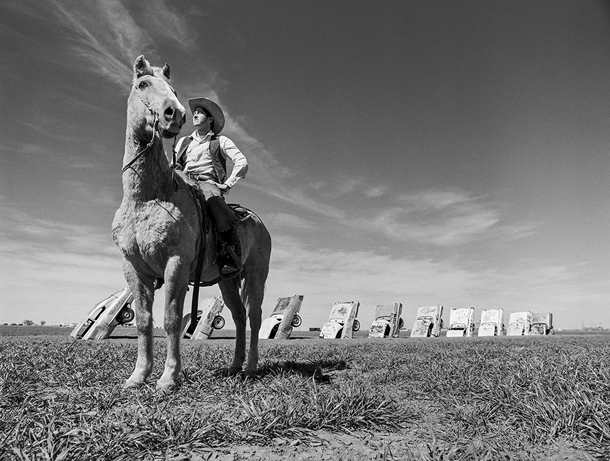
Ant Farm artist Chip Lord returned to check on his herd a couple of years after they were buried.

Cadillac Ranch was moved in 1997 from its original site along Interstate 40 to a new spot two miles west along the interstate. The move was necessary because Amarillo’s growth was westward and the property where the caddies were buried was becoming increasingly valuable.
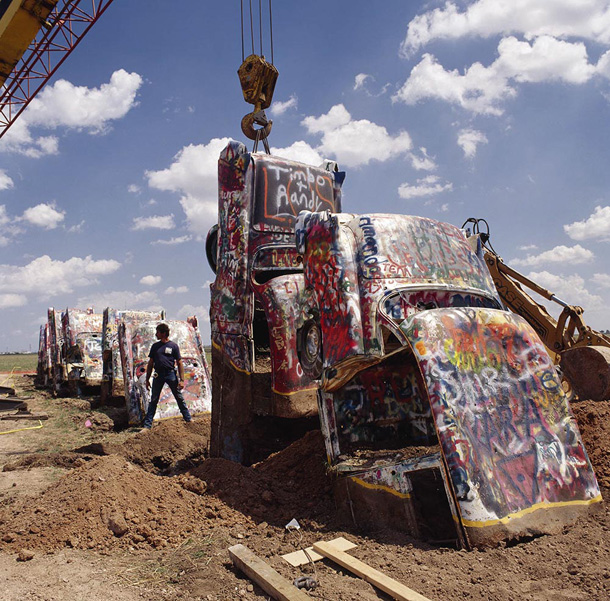
A Cadillac dangles from a crane during the 1997 move two miles westward along Interstate 40.

My younger son Stuart in 1989. He and his brother, Trevor, would join me on my picture making excursions to the ranch. I was using a special panoramic camera for a project and thought it would be a good format for the caddies.
- More About:
- Photo Essay
- Wyatt McSpadden
- Stanley Marsh 3

